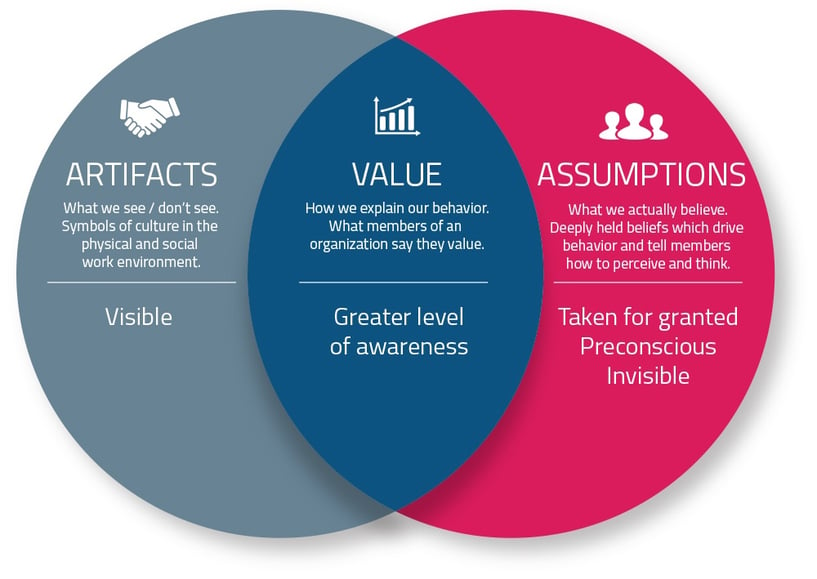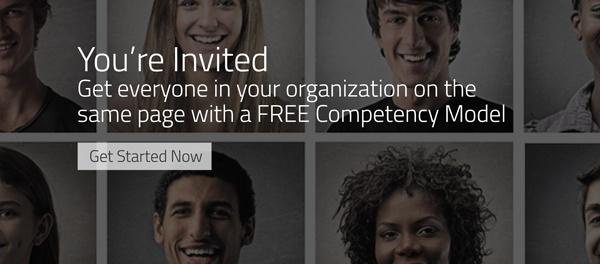Starting A Culture Change Conversation
Author
Heath O'Leary
When working with an executive team to discuss culture change, you want to set expectations.
It is good to go to a flipchart or whiteboard and capture any additional expectations members of the team have.
In an ideal situation, the CEO or leader who is sponsoring the Culture Change Initiative would present the following goals
as part of the kick-off.
The Goal of this Exercise:
- Identify key business issues in specific, behavioral terms.
- Uncover drivers of the behaviors that contribute to problems.

Here is the model we will use for talking about Culture. It comes from work by Edgar Schein who was the first scholar to use Culture as an important concept in business. As long as all levels align and are congruent, then there is no conflict or problems. However, when there is a disconnect between what is being said [VALUE] and what is actually happening [ARTIFACTS], then we have to dig for the underlying [ASSUMPTIONS] that are really driving things.
Start by answering the following questions [VALUE]:
- What has Changed? (Insert the organization’s Vision or Strategy and what is new or different about it.)
- Next, set some context for why you’re discussing this subject: What has changed that the organization “isn’t getting, or buying into yet”?
- What is the organization trying to become?
Next, identify Critical Business Issues [Artifacts]:
Capture what the group shares on flipcharts. Push them to describe things in terms of what is actually done or not done. Be very specific – no generalities because a root cause of disagreement in many leadership teams is lack of shared definitions of the words they use to say “what they want.”
- What is it you want to change?
- What does this look like in specific, behavioral terms?
- What at are the organization-wide issues and behaviors that are hindering your implementation of the new Strategy, etc.?
- If we put hidden cameras throughout the organization, what would we see? Not see?
- Broaden the scope and discuss what it is like to work here in general.
Continue flip charting. This should go on for about an hour and will fill a wall or two with chart paper.
The idea is to surround the group with the artifacts of their own culture.
In our next post we'll discuss how to redefine new behaviors and align them with the new culture/vision and the right rewards and recognition.
 Align your Culture and Strategy with a Free Competency Model.
Align your Culture and Strategy with a Free Competency Model.
We're now offering a FREE Competency Modeler toolkit, so you can get started selecting the competencies that are essential to your Culture.
Your model can then become the ‘blueprints’ for hiring, managing, and developing your people.
Click here to get full access to the ThinkWise Competency Modeler toolkit